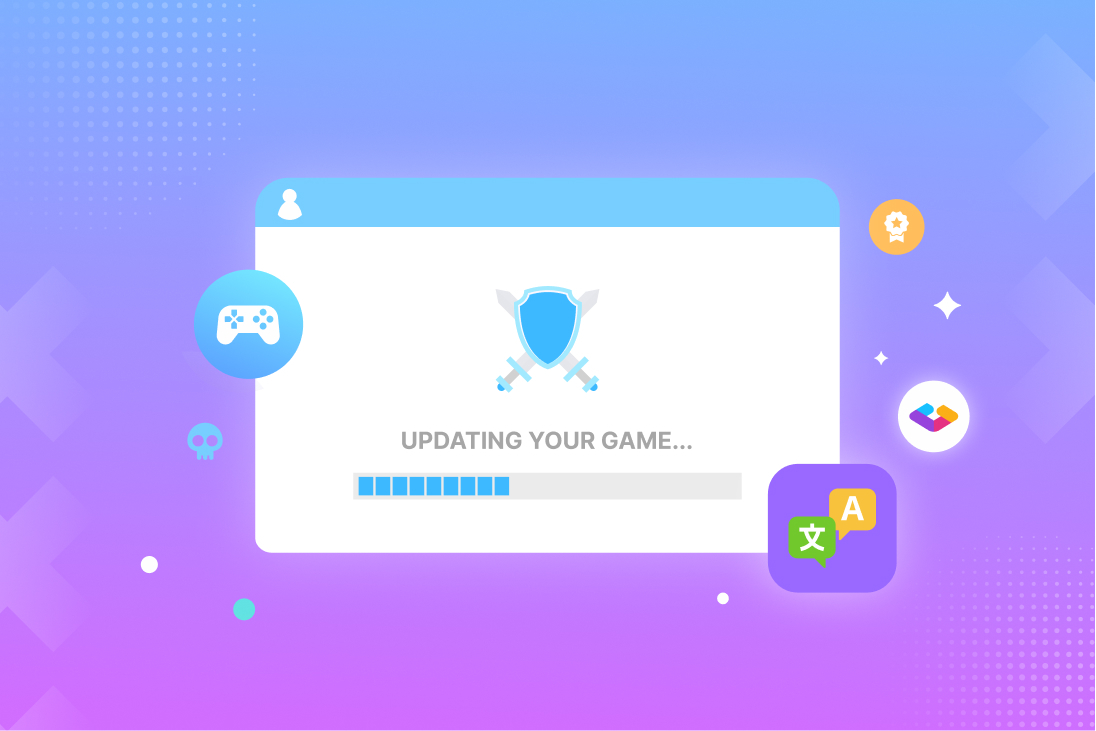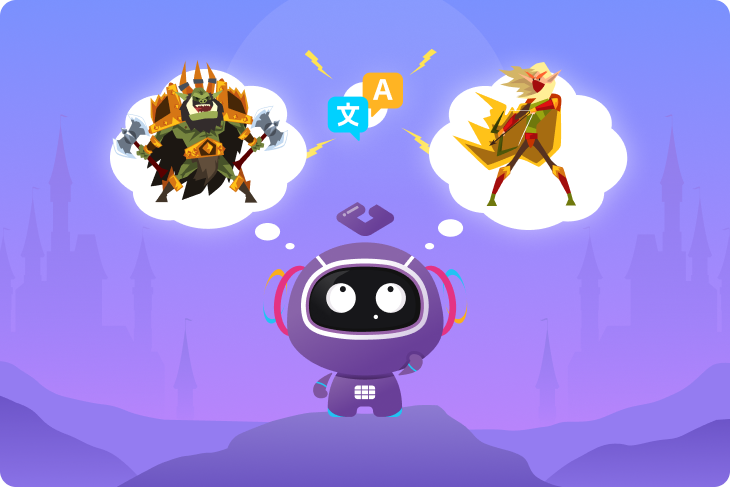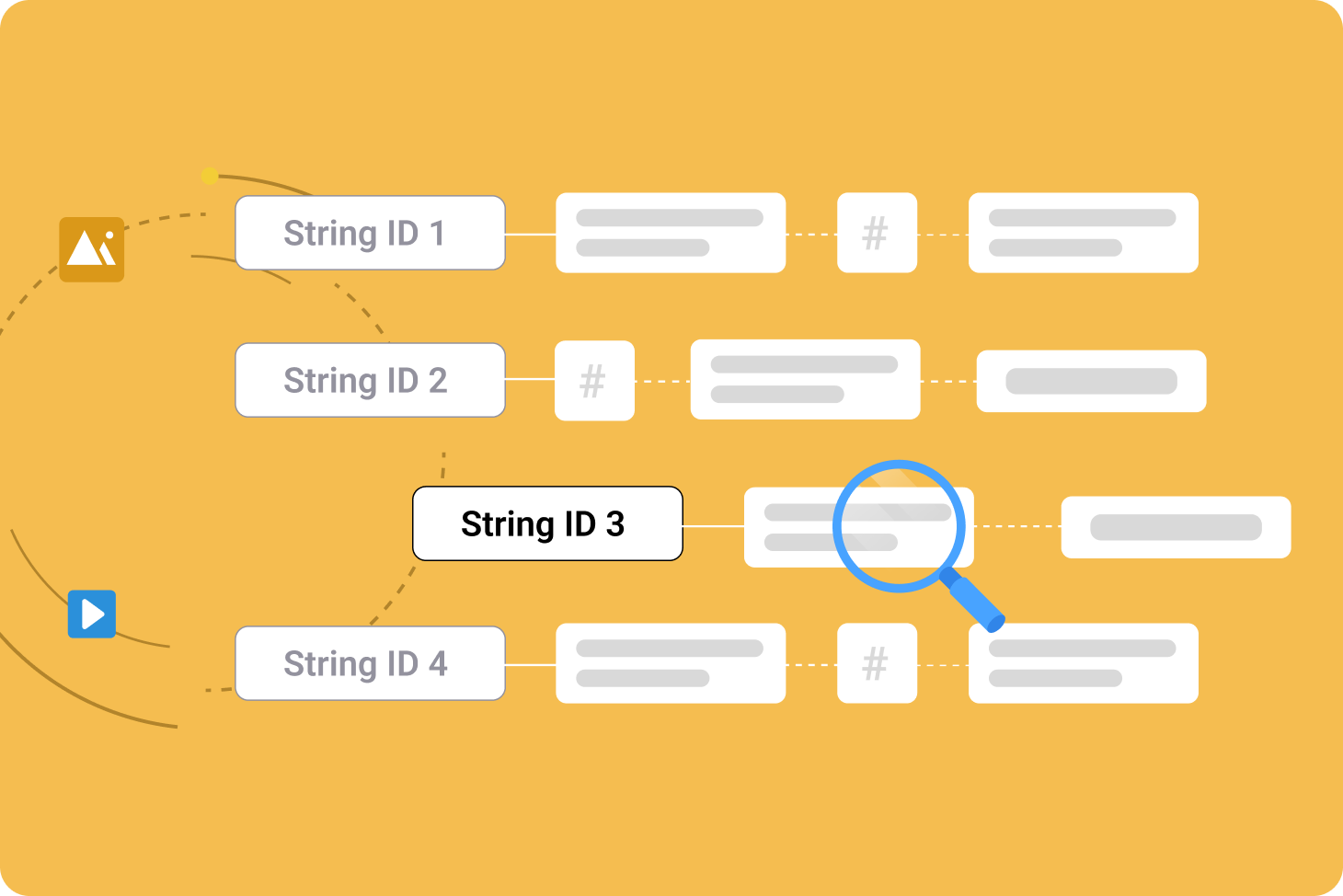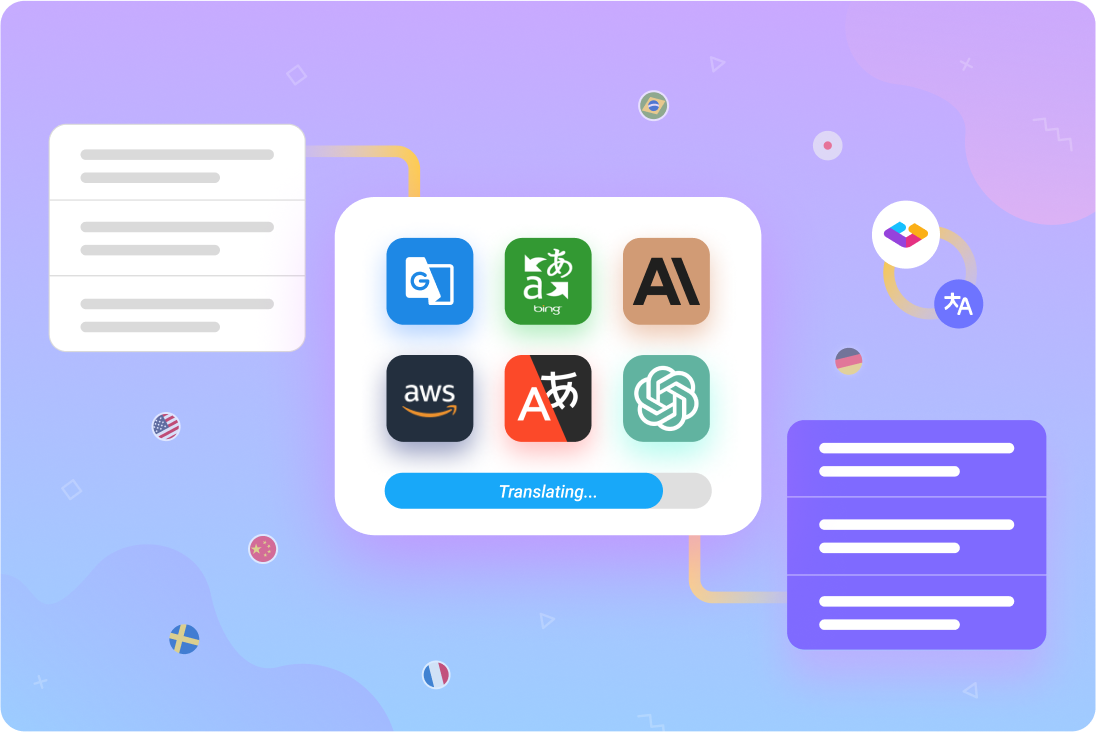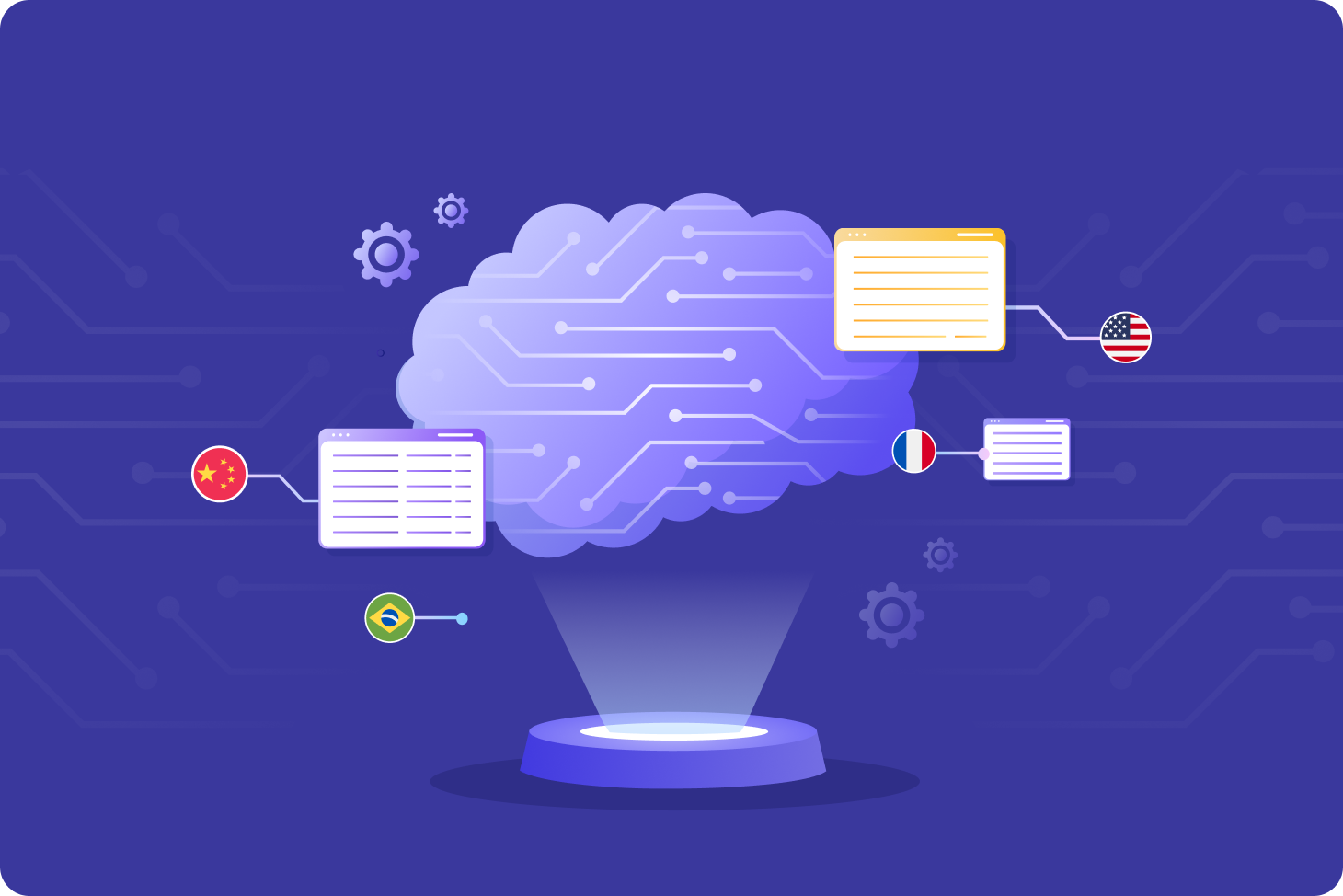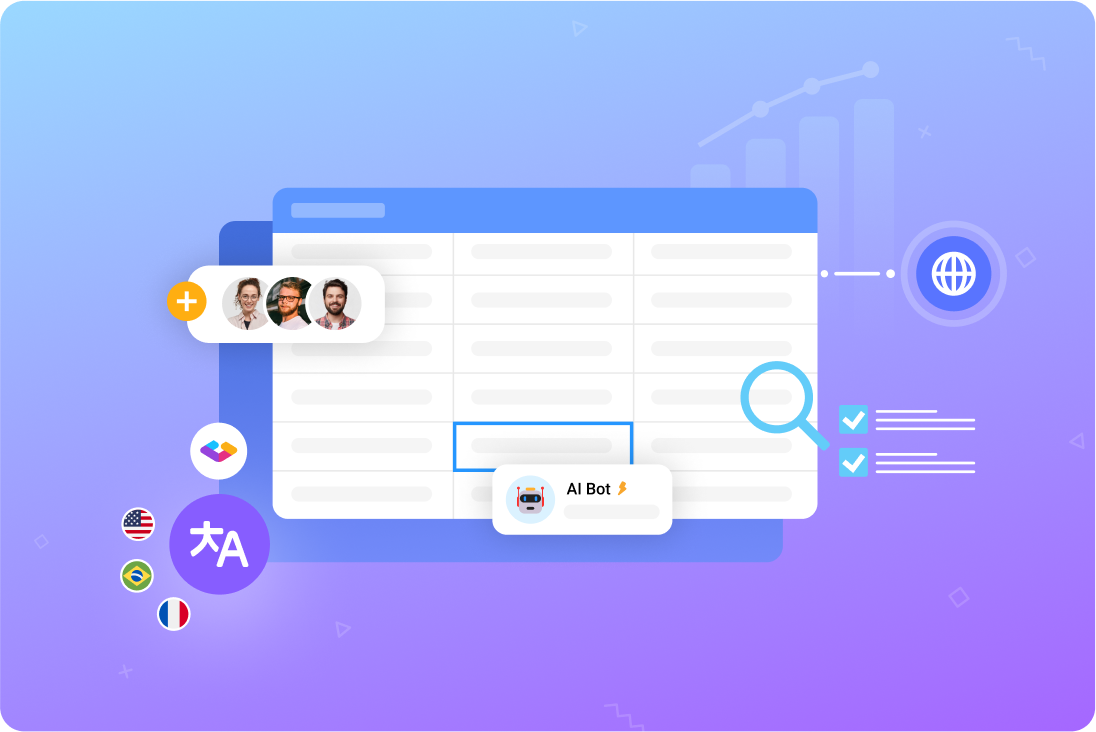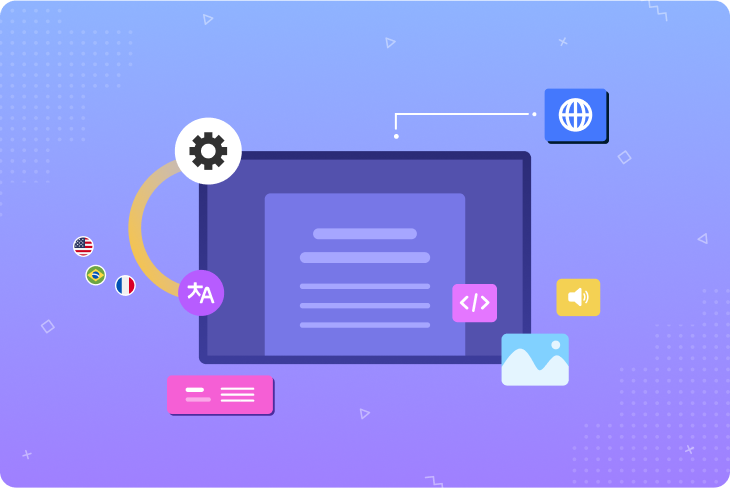What is LiveOps?
LiveOps is short for live operations and encompasses anything that changes a video game after it’s been released, but without creating a new game. The GaaS (gaming as a service) model views a game not as a finished product, but as an ongoing service that should be regularly enhanced with new features, updates, promotions, and other value-adding content.
Before the internet era, games couldn’t be updated post-launch. Any bugs were there to stay, and new missions or story ideas would have to wait for the sequel. But as games entered the digital world, developers could both fix bugs and give players more to do without releasing an entirely new game. LiveOps enables you to keep players engaged with your game for years after launch.
Why is localization important for LiveOps?
Localization is necessary for optimal LiveOps implementation. Here’s a look at three big reasons why:
-
Create region-specific content: Localized events and items are highly effective at engaging new and old players alike. An event inspired by a local holiday or festival with exclusive rewards that fit the theme is sure to delight players in that region.
And since not all regions share the same holiday calendar, effective localization will give you a year’s worth of content to deploy all around the world.
-
Push content live in multiple markets at once: Localize content as you create it so by the time you’re ready to launch, you’ve got all your localized versions ready to go. This is ideal for seasonal events and other LiveOps content that transcends borders.
Rather than create content in your source language and then wait for localized versions to roll in, shorten your development cycles with agile localization and be able to continue working on new content instead.
-
Communicate with players around the world: The LiveOps model includes players in content creation by empowering them to provide feedback. Players can share their thoughts on a game’s current state while expressing their wishes for future content.
Localized community spaces are essential for bringing players into the conversation. Allow players to send messages to you in their native languages and set up region-specific forums for them to use with each other. Create localized social media content and engage with players when they interact with it.
Look at where your players are already congregating and conversing, see what they’re saying about your game, and incorporate your findings into your ongoing LiveOps content plan.
What types of LiveOps are there?
- Events: Many multiplayer mobile games host events that bring players together under a certain theme. Players can compete to win exclusive rewards, such as new skins, clothes, or weapons that match the event’s theme.
- Targeted purchase bundles: Developers can incentivize purchases with attractive bundles set at prices that players just can’t turn down. These can cover anything from simple item combos to a time-limited game mode that comes with an exclusive cosmetic reward.
- Fresh content: Energize your game with new costumes, characters, and rewards, and give them to players in exchange for participation in events and challenges.
- New features: LiveOps isn’t limited to cosmetic items or events. Many developers add new game modes, missions, levels, or areas for players to explore.
What are the benefits of LiveOps?
By continually introducing new content into a game, developers can refine the gameplay, add replay value, retain current users, and attract new players, even years after a game’s initial release. The game isn’t a product so much as a live service that can secure ongoing revenue streams via novel player engagement strategies.
Player retention
Even the most engaging RPG or multiplayer game will feel stale after a while without new content. LiveOps extends the lifespan of your game with the allure of new things to see and do, as well as any quality-of-life changes your players need. You’ll keep players as enthusiastic in year two or three as they were on day one
When Cyberpunk 2077 first launched in 2020, it was roundly criticized as buggy and unfinished, so much so that Sony and Microsoft offered refunds for purchases of the game on PS4 and XBox One, respectively. But after two years of fixes, updates, and new content — and propelled by an animated series on Netflix — it’s now the eighth-most played game on Steam as of October 2022.
Player engagement
Even the most passionate players may not log into your game as often as you’d like. LiveOps can add enticing content that keeps players logging in so they don’t miss a single thing. It’s even common to see many LiveOps events promising rewards after players maintain a login streak of a given length.
And by transforming a game into an ongoing service, LiveOps allows players to provide feedback to developers and shape ongoing content. This gives players a sense of ownership over the games they love and replaces a formerly one-way relationship between developers and players with a mutually beneficial dialogue.
>> Learn more about localization and game development
Increased spending
LiveOps content is often linked to in-app purchases. Events, challenges, and limited items may encourage players to spend in-game currency, while the sheer numbers of players engaged and retained via LiveOps can often translate directly to higher revenues.
Your localization research will also inform you about the behaviors and preferences of players in various regions. Use your findings to tailor bundles to specific regions and further drive player spending.
Better metrics
Successful LiveOps implementation requires a precise understanding of your player base. And the more opportunities you give players to return and engage with your game, the more you’ll learn about them. Let the data pour in, then use it to provide more meaningful and attractive content to your players.
Prepare yourself for localized LiveOps with the right content platform
A healthy LiveOps content plan will require a ton of content as well as the ability to smoothly manage it. Localizing all this content requires a content management platform that enables everyone on the team — content creators, localization writers, quality testers, project managers, and developers — to access the content they need while safeguarding against unwanted changes.
As a content platform with a suite of built-in localization features, Gridly is the perfect centerpiece for your LiveOps localization pipeline. Host all your content in one place for a single, living source of truth while integrating with your favorite tools and game engines for seamless content delivery.
Empower your localization teams to explore and stretch their creative muscles with separate branches for staging content. Keep track of all your region-specific content and push it live into your game with a single click.
Anchor your continuous localization workflow with a content platform designed to help your LiveOps campaign succeed. Find out more about what Gridly can do for you.
>> Discover how Gridly makes it easy to manage game content
>> Learn how easy it is to integrate Gridly into your software ecosystem
